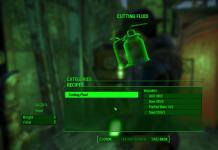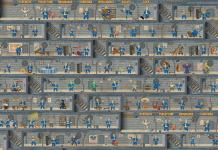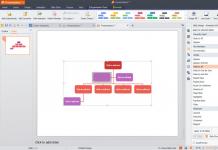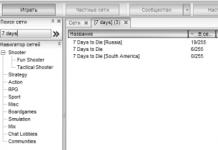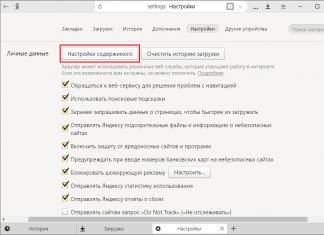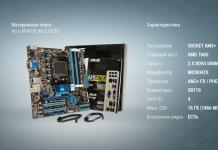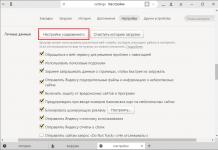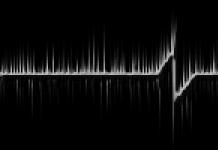The stylish LG Optimus L7 smartphone is the top of the L-Style line, which debuted in Barcelona at the Mobile World Congress 2012. A lot of time has passed since then, and now, a month after the start of sales of the youngest representative of L-Style - the LG Optimus L3 smartphone, it has arrived to us and flagship. Having captivated us with its appearance, display, and interface, it nevertheless left ambivalent impressions. You can find out what the smartphone lacked to win on all fronts from our review.
Back in late 2011, Android smartphone manufacturers began to organize their devices into classes, groups, and lines. This is what Sony did with their NXT line, and HTC chose the same path, releasing three smartphones united under one word: HTC One. The situation is similar with Ascend from Huawei, and L-Style from LG. Almost all of the listed brands have a line that covers several price segments, ranging from 3,000 hryvnia to 6,000 hryvnia. Compared to them, LG smartphones are clearly out of trend. The younger model, which the site has earned the title of the most durable Android smartphone on the market (we know about the Motorola Droid RAZR Maxx, but it’s too specific a model, and also CDMA), costs only 1,400 hryvnia. The older one will cost on average 1,700 hryvnia more. That is, the most expensive smartphone in the L-Style line costs about the same as the most affordable HTC One or Sony Xperia. Does this mean that LG has no one to compete with? Yes and no. For example, Optimus L7 will have to compete for a place in the sun with, and Samsung Galaxy Ace 2. As you can see, there are more than enough competitors and each has its own qualities. Since all of the listed smartphones have already been tested by us, and the Samsung Galaxy Ace 2 has just reached our editorial office, we can evaluate the prospects, as well as the strengths and weaknesses of the LG Optimus L7.


| LG P705 Optimus L7 (Black) |
HTC One V (Black) Notify when on sale |
Sony Xperia Sola (Black) Notify when on sale |
Sony Ericsson Xperia Arc S (Black) Notify when on sale |
|
| Standard | GSM 850/900/1800/1900, UMTS 900/1900/2100 | GSM 850/900/1800/1900, WCDMA 850/900/2100 | GSM 850/900/1800/1900, UMTS 800/850/1900/2100 | |
| High speed data transfer | GPRS, EDGE, HSDPA (up to 7.2 Mb/s) | GPRS, EDGE, HSDPA, HSUPA | GPRS, EDGE, HSDPA, HSUPA | GPRS, EDGE, HSDPA, HSUPA |
| Dimensions (mm) | 125.5x67x8.7 | 120.3×59.7×9.24 | 116x59x9.9 | 125x63x8.7 |
| Weight (g) | 122 | 115 | 107 | 117 |
| Processor (for smartphones) | Qualcomm MSM7227A, 1 GHz + Adreno 200 | Qualcomm MSM8255, 1 GHz + Adreno 205 | STE U8500, 1 GHz (dual core) + Mali-400MP | Qualcomm MSM8255T, 1.4 GHz + Adreno 205 |
| Memory | RAM 512 MB + 4 GB internal memory | 512 MB RAM + 8 GB internal memory | 512 MB RAM + 1 GB internal memory | |
| Expansion slot | microSD (up to 32 GB) | microSD (up to 32 GB) | microSD (up to 32 GB) | microSD (up to 32 GB) |
| Main screen | Super LCD 2, 3.7″, 480×800 pixels, 16 million colors, touch, capacitive, multi-touch support | TFT (Mobile BRAVIA Engine), 3.7″, 480×854 pixels, 16.7 million colors, touch, capacitive, multi-touch support | TFT (Mobile BRAVIA Engine), 4.2″, 854×480 pixels, 16.7 million colors, touch, capacitive | |
| Accumulator battery | Li-Ion, 1700 mAh | Li-Ion, 1500 mAh | Li-Ion, 1320 mAh | Li-Ion, 1500 mAh |
| Communications | USB 2.0 (micro-USB), Bluetooth 4.0 (A2DP), Wi-Fi 802.11 b/g/n (DLNA) | USB 2.0 (micro-USB), Bluetooth 2.1+EDR (A2DP), WiFi 802.11 b/g/n (DLNA), NFC | USB 2.0 (micro-USB), Bluetooth 2.1+EDR (A2DP), WiFi 802.11 b/g/n | |
| Photography | 5 MP, auto focus, digital zoom, geotagging | 5 MP, auto focus, 16x digital zoom, face and smile detection, 3D Sweep Panorama, geotagging | 8.1 MP, auto focus, 2.46 x digital zoom, geotagging, 3D panoramic shooting function, face and smile detection in the frame | |
| Video shooting | 640x480 pixels, up to 30 fps | 1280x720 pixels, up to 30 fps | 1280x720 pixels, up to 30 fps | 1280x720 pixels, up to 30 fps |
| Flash | LED | LED | LED | LED |
| operating system | Android 4.0 (ICS) + HTC Sense 4.0 interface | Android 2.3 (Gingerbread), with subsequent update to Android 4.x | Android 2.3 (Gingerbread) | |
| FM radio | Yes | Yes | yes (87.5-108 MHz, RDS support) | yes (87.5-108 MHz, RDS support) |
| Additional features | media player, Google services, position sensor (G-sensor), gyroscope, digital compass, media player, proximity sensor, light sensor, a-GPS module, HTC widgets, applications for accessing social networks (Facebook, Flickr, Twitter or YouTube ), SIM card type - microSIM | media player, a-GPS receiver, Google services, accelerometer, integration with social networks, Floating Touch function, work with office documents, light and proximity sensors | media player, GPS receiver (a-GPS support, Google Maps software), synchronization with Google services (Gmail, Search, Talk ect), accelerometer, integration with social networks, work with office documents, light and proximity sensors |
Appearance and ergonomics
The design of the Optimus L7 should comply with the established canons of the L-Style line - a solid rim around the perimeter, a grooved back surface, flat edges and keys with centric circles. At first glance, this is how it really is. Until you start to get to know the device better... Unlike the flat ends of the LG Optimus L3, Optimus L5 and, in this one they decided to leave only the top end flat, while the bottom was made rounded, as well as the sides of the case. If it were as flat, the corners of the case would certainly rest against the palm, thereby causing a feeling of discomfort during long-term use. The smartphone also does not have the protrusion of the rear part above the plane of the body that is characteristic of the line.




It turns out that, despite the fact that the smartphone belongs to L-Style, it has its own style. Note that our copy is completely black, but the smartphone is also available in white.





To estimate the dimensions of a smartphone, we suggest taking a look at a comparison of the corresponding parameters with devices equipped with a display of a similar diagonal:
LG Optimus L7 (4,3”)
126 x 67 x 8.7 mm, 122 g
LG Optimus 3D Max (4,3”)
127 x 67 x 9.6 mm, 148 g
Nokia Lumia 900 (4.3”) 128 x 69 x 11.5 mm, 160 g
Sony Xperia S (4.3") 128 x 64 x 10.6 mm, 114 g
Motorola Droid RAZR (4.3") 131 x 69 x 7.1 mm, 127 g
HTC Sensation XE (4.3") 131 x 65 x 7.8 mm, 120 g
HTC One S (4.3") 126 x 65 x 11.3 mm, 151 g
Samsung Galaxy R (4.2”) 125 x 66 x 9.5 mm, 135 g
Samsung Galaxy SII (4.23”) 125 x 66 x 8.5 mm, 116 g
Sony Ericsson Xperia arc S (4.2”) 125 x 63 x 8.7 mm, 117 g
From the comparison it is clear that the Optimus L7 has compact dimensions for a device with a 4.3” screen.




Operating system and interface
It just so happened that the smartphone came to our editorial office along with the company’s flagship – LG Optimus 4x HD and LG Optimus L5, thanks to which we have the opportunity to evaluate in detail the work of Android 4.0 on these devices. Despite the same OS version 4.0.3 and shell – Optimus UI 3.0, the interface of the smartphones looks similar only at first glance. Due to a less powerful platform, as well as a lower resolution display, the Optimus L7 interface is simpler than that found in the Optimus 4x HD. This is not surprising, because that’s why it is the company’s flagship, to be the very best in everything.

The theater starts with a hanger, and the interface starts with the lock screen. And here we are greeted by the first significant changes. By default, a minimum of useful information is displayed on the screen, but its amount can be configured in the “Screen Lock” menu. It contains 4 items – “Select screen lock”, “Wallpaper”, “Widget and shortcuts” and “Owner information”.



The first item allows you to configure exactly how the screen will be unlocked: absent as such, with a swipe of a finger, a pattern, a PIN code or a password. All except “Swipe” are well known from other smartphones based on Ice Cream Sandwich, so let’s take a closer look at the proprietary method. This unlocking method is associated with several devices and systems. For example, Android Honeycomb, Ice Cream Sandwich and Samsung Galaxy Ace 2. In the case of Optimus UI 3.0, the developers went further, the whole process is accompanied by beautiful effects.





You can add one of three clock widgets and four quick launch shortcuts to your locked screen. The choice of shortcuts is limited solely by the number of installed applications. To launch any of them, just point your finger at it and, without lifting it from the screen, swipe it in any direction.




There is also a quick call to the notification menu. It is worth noting that LG did not forget about the usefulness of shortcuts for quickly changing certain functions, and left them in Optimus UI 3.0. Moreover, now the list can be edited, for example, swapping shortcuts or adding new ones (up to ten pieces).




The number of desktop windows is adjustable from one to five.




Let's start with the most important thing - the implementation of telephone functions. The numeric keypad supports searching for contacts by both phone number and name. For the latter, however, there is a limitation in the form of searching exclusively in Latin. There is a speed dial with 99 cells.



In the call settings, you can choose to automatically reject incoming calls from the list or all without exception. The list is nothing more than a Black list, where you can add numbers from the phone book, incoming calls, or enter them manually. When you receive calls from numbers not included in the phone book, at the end of the conversation you will be asked to add a contact to the phone book. When viewing detailed information about a contact, the image assigned to it occupies 1/3 of the screen; when making an incoming or outgoing call, it takes up ¾ of the screen area.




The volume of the speaker is above average, a similar result when using the speakerphone. The quality of speech transmission also does not have any obvious drawbacks.
The typing of text messages is no different from what we saw in Android 2.3. The changes affected the key layout of the virtual keyboard; for some reason, the usual letters “Y” and “X” did not fit in the main block and were moved to the bottom row.





The gallery is also no different from that in pure Android. Images and videos are displayed as rectangular tiles. Directly from the application, you can launch the camera, upload files to social networks, or transfer to a compatible device. To work with photographs, a graphic editor is provided that, in addition to standard functions, can crop, rotate, and do things that were previously available only to desktop editors.




You can evaluate the editor's abilities from the screenshots:







The smartphone's music capabilities are represented by a redesigned player. The main change is the presence of sorting files into folders. The sound quality is good, the volume is enough to listen to music on noisy streets or in the subway.








The video player now features display brightness adjustment when watching videos and screen locking. In this case, the smartphone only responds to the volume or power/lock keys.




The radio is capable of storing 48 stations in memory, but for some reason does not support RDS. Just like the music player, you can set a sleep timer. The signal reception quality leaves much to be desired. Perhaps the reason is a bad location.




The calendar supports pinch-to-zoom and has a ton of different display types, from agenda to month. Data from different accounts differs in color.




That's all that could be said about the pre-installed applications in the LG Optimus L7. Now it’s time to go directly to the interface.
As we have already said, the maximum number of Desktop windows is five. There are seven different types of animations for moving between windows. Wallpaper gallery consists of 9 pieces. Wallpaper for the desktop and lock screen are set separately. In the menu, you can specify whether to scroll through the wallpaper along with the windows or not, and also enable or disable cyclic scrolling. Overall, the animation deserves praise, everything works smoothly and beautifully.




You can add a shortcut or widget to the desktop in two ways - traditionally, by long tapping on a free cell of the screen, and by clicking on the “+” icon in the upper right corner of the screen. As in Optimus UI 2.0, there are four tabs: “Applications”, “Downloads”, “Widgets” and “Wallpapers”. The list of widgets is not very diverse; all the essentials are present. If there is no space on the screen to place a widget, the smartphone will offer to add another window or indicate where the block to be installed can be placed.




I was also surprised by the work with folders. To create a folder, you need to move one shortcut to another. The folder size can occupy either one cell of the Desktop or all 16 cells. The name of the folders and their color can be changed at your discretion. If, as the size of the folder increases, it overlaps adjacent shortcuts, the latter will be automatically shifted so that you can place the folder as convenient for you. Each folder can contain up to 16 shortcuts.




While talking about the interface capabilities, we almost lost sight of the personalization of the bottom bar of Desktop shortcuts. By default, there are four shortcuts there, including the non-deletable “Applications”. If desired, the number of labels can be changed from one to five.




And so we gradually approached applications. To call up the menu of the same name, there is a separate key at the bottom of the screen. Initially, the menu list consists of 20 icons arranged in a 4x5 matrix, but the amount of information displayed can be increased by 50% by setting the display to 5x6. A simple function that for some reason is still not available in any other proprietary shell. In “Applications” there are three bookmarks, the applications themselves, “Downloads” and “Widgets”. The first contains all applications, the second contains only those that were downloaded by the user, and the third contains widgets. Unlike other Android 4.0 devices, Optimus UI 3.0 does not allow you to simply swipe from one bookmark to another. That is, to get to the section with widgets you need to click on the corresponding shortcut at the top of the screen. The number of pages in the “Applications” section is limited only by your imagination. After adding page 26, we stopped trying to figure out the maximum allowable number of those same pages.








In conclusion of the description of the Optimus UI 3.0 interface, we note that the new shell has exceeded all our expectations. Personalization options can satisfy the most demanding users, although HTC Sense is still a long way off. It is worth noting that in the LG Optimus 4x HD the situation is somewhat different. There you can change shortcut icons, themes and much more. The interface of the LG Optimus L7 smartphone should be considered as the minimum capabilities of Optimus UI 3.0, because some of the features on it are not available due to hardware limitations, but more on that in the next section.
Platform
At some point, the situation around the processor used in the LG Optimus L7 resembled fortune-telling. Someone insisted that the smartphone had a Qualcomm MSM7227A installed, someone talked about the TI OMAP 4430. The cruel reality prevailed - the L7 has an ARMv7 processor of the first generation Snapdragon - Qualcomm MSM7227A, operating at a frequency of 1 GHz and an Adreno 200 graphics core. It was this that became the Achilles heel of the smartphone. If you do not load the processor with a large number of background applications or many tabs in the browser, the smooth operation is not satisfactory. But as soon as you relax a little, the reaction to the user’s actions slows down, sometimes turning into a noticeable slowdown.




The manufacturer claims technology that increases the efficiency of the SiO+ battery. Considering the capacity of 1700 mAh, the presence of a power-saving mode and SiO+ technology, you can expect good results. The results are really good, especially considering the large screen of the smartphone. With active use, the operating time is 6-8 hours. When using the smartphone in normal mode: about 20 minutes of talking, sending and receiving text messages, reading news via Wi-Fi and communicating on social networks, you can count on two days of work.




Playing video files
| Codec/Name | FinalDestination5.mp4 | Neudergimie.2.mkv | s.t.a.l.k.e.r.avi | Spartacus.mkv | ParallelUniverse.avi |
| Video | MPEG4 Video (H264) 1920×798 29.99fps | MPEG4 Video (H264) 1920×816 23.98fps ] | Xvid 712×400 25.00fps 1779kbps | MPEG4 Video (H264) 1280×720 29.97fps ] | MPEG4 Video (H264) 1280×536 24.00fps 2726kbps |
| Audio | AAC 48000Hz stereo 96kbps | MPEG Audio Layer 3 44100Hz stereo] AAC 44100Hz stereo |
MPEG Audio Layer 3 48000Hz stereo 128kbps | Dolby AC3 44100Hz stereo ] | MPEG Audio Layer 3 44100Hz stereo 256kbps |
Display

One of the advantages of the smartphone is a 4.3” IPS screen with a resolution of 800x480 pixels. Traditionally, for IPS matrices, image quality is beyond praise. The backlight intensity is adjustable from 4 to 250 cd/m². The smartphone does not have a light sensor, which means you have to manually adjust the brightness. A shortcut in the notification menu with three adjustment levels helps: 0%, 40% and 100%.
Tempered glass is used to protect the display, but not Gorilla Glass. Despite this, after more than a week of active use, not a single scratch appeared on the body of the smartphone, including the glass.
Camera
The smartphone is equipped with a 5 MP camera with autofocus. The maximum resolution of pictures is 2560x1950 pixels, video is 640x480 pixels at 30 frames/s and mono sound. Photo and video quality is average. In addition to the main camera, there is a VGA camera on the front panel for video communication. The settings menu is similar to the main camera, including the resolution of the recorded video.






Examples of 5 MP photos






VGA video example
Results
LG Optimus L7 is positioned as the successor to LG Optimus Black. Being only 400 hryvnia more expensive, the L7 has a larger diagonal display, 8 GB of internal memory, a higher quality and thinner body and, most importantly, runs Android 4.0. If performance and camera are important to you, we recommend choosing the LG Optimus Black.
Liked
+ Housing materials
+ Display
+ Redesigned Optimus UI
+ 8 GB Flash memory and support for MicroSD memory cards
Did not like
— Lack of light sensor
— Outdated graphics core
— Recorded video resolution
— Photo quality
| n.d. | |
| Processor (for smartphones) | Qualcomm MSM 7227A, 1 GHz + GPU |
| Memory | 512 MB RAM + 2.7 GB internal memory |
| Expansion slot | microSD (up to 32 GB) |
| Main screen | IPS, 4.3″, 480×800 pixels, 16.7 million colors, touch, capacitive, multi-touch support |
| Additional screen | No |
| Keyboard type | screen input |
| Accumulator battery | Li-Ion, 1700 mAh |
| Operating time (manufacturer's data) | n.d. |
| Communications | USB 2.0 (micro-USB), Bluetooth 3.0+HS (A2DP), WiFi 802.11 a/b/g/n |
| Dual SIM support | No |
| Photography | 5 MP, auto focus, digital zoom, front VGA camera |
| Video shooting | 640x480 pixels |
| Flash | LED |
| operating system | Android 4.0 (ICS) + original LG interface |
| Phone book | dynamic |
| Working with messages | SMS, MMS, e-mail (Gmail), Gtalk instant messages |
| Organizer | calendar, clock, alarms, notes, reminders |
| Voice functions | voice dialing, voice notes, voice mail |
| Speakerphone | Yes |
| Internet access | Wap 2.0, xHTML, HTML (Android browser) |
| Additional utilities | calculator, currency and unit converter, voice recorder, world time clock |
| Games | Yes |
| Sound signal | polyphonic, MP3 support |
| MP3 player | Yes |
| FM radio | yes (RDS support) |
| Additional features | media player, video telephony, a-GPS receiver (Google Maps support), accelerometer, integration with social networks, light and proximity sensors |
The LG P705 smartphone, the characteristics of which will be discussed in the article, went on sale five years ago (2012). At that time, he could easily claim the title of flagship. The company's developers put a lot of effort into releasing a unique gadget, which was predicted to become a bestseller on the mobile device market. And indeed, there was a rush at the start of sales. In the first week alone, about 5 thousand devices were sold. This model has attracted the interest of those buyers who would like to purchase a high-quality and functional smartphone at an affordable price.
A few words about design
Before considering the characteristics of the LG Optimus P705, it is necessary to briefly highlight the features of the external design. First of all, users paid attention to the size. While there are no peculiarities in the length and width (125.5 × 67 mm) of the case, the thickness of the device caused a lot of applause. In 2012, thin gadgets were quite rare. LG presented the buyer with a smartphone whose thickness was 8.8 mm.
It should be noted that the phone looks stylish externally. The body itself is made of plastic. The back cover has a matte surface, which significantly reduces the level of soiling. Thanks to the special relief pattern, the panel is practically not scratched, and the gadget itself does not slip in the hand. The manufacturer used a plastic edging as a side frame. The main chamber is decorated with a metal plate.
There is not much variety in colors. The buyer is presented only with classic options - white and black.

LG P705 phone: screen and camera characteristics
Of course, the main feature of this model is the 4.3-inch screen. Thanks to its good resolution (800 × 480 px) and high-quality IPS matrix, LG Optimus L7 has become a favorite. The developers have provided color rendering settings. The user can choose natural, calm or rich colors. This phone supports up to seven touches made simultaneously. The sensor is quite sensitive. The brightness range is enough for comfortable work outdoors in any weather. However, viewing angles can hardly be called wide, since when tilted, the contrast noticeably decreases.
In the LG P705, the main camera performance also impressed buyers. The 5-megapixel sensor allows you to take high-quality pictures. Auto focus works at high speed. The flash also complemented the characteristics. The level of detail is quite good, thanks to which even moving objects turn out clear in the photo. The developers provided all standard options.
But there weren’t many praises for the front camera. It is based on a 1.3-megapixel matrix, which is only suitable for video communication.

LG P705: performance characteristics
What, if not the hardware, best characterizes a gadget? Considering that the model was released five years ago, its equipment was quite impressive. To ensure the phone's functionality, the developers installed a Snapdragon processor, model MSM7227A. It is based on a single computing module, which is capable of delivering power of 1000 MHz. The main one is paired with an Adreno 200 video card.
These parameters are also complemented by 512 MB of RAM. This “filling” allows the LG P705 smartphone to work quite quickly. The characteristics of the phone also include the size of the built-in memory. There is nothing impressive about this setting. The user is provided with a storage capacity of four gigabytes, which can be increased to 32 GB by installing an external drive.
The Korean device runs Android 4 (ICS). The proprietary Optimus 3.0 interface is used on top of the platform. Its indisputable advantage is that the user himself chooses which applications to install.
The developers also provided all the necessary communications. The device includes: navigation module, Bluetooth, USB and Wi-Fi.
Autonomy
The indisputable advantage of the LG P705 is its battery performance. The device has a 1700 milliamp per hour battery. The menu has a special option that allows you to efficiently use battery power. In order to restore the battery life, it will take about 2.5 hours if you use a charger.
Battery life:
- when watching a video - approximately 4 hours;
- in audio player mode - up to 27 hours;
- work on the Internet - 7-10 hours.

Conclusion
Summing up, I would like to note that the smartphone has an optimal balance between price and quality. Stylish design and reasonable price (about 14 thousand rubles at the start of sales) made this model one of the most popular. Its main advantages are a high-quality screen, autonomy, and a narrow body. There are no critical flaws in the phone. The only weaknesses are the small size of the built-in memory and the low resolution of video recording.
The new LG Optimus L7 smartphone is the flagship of the stylish L-Style line. The Koreans conceived the model as a continuation of the popular Optimus Black. The device has three main features: a large 4.3” screen, the latest version of Android ICS OS, and a price of only $460, which is inexpensive for a flagship smartphone. In addition, there is a nice design, in particular the thickness of 8.8 mm. Let's look at the device in action and see if everything is as good as the Korean company promises us.
The last few years in the mobile market have not been easy for LG. However, we must give this company credit for not giving up and not closing this division. LG's new lineup includes the stylish L-Style models (Optimus L3, L5 and L7), the new 3D smartphone Optimus 3D MAX and the quad-core top-end flagship Optimus 4X HD.

LG Optimus L7 is not the flagship of the entire line of the Korean manufacturer, but from L-Style it is top-end, with maximum characteristics. The latter primarily means a large, high-quality display, on which LG is placing its main emphasis. For the first time, a model from a major manufacturer for $460 has a 4.3” matrix installed. In addition, the device is thin (8.8 mm) and runs on the new Android ICS. As you can see, L7 is really interesting at first glance, but let’s not rush to conclusions.

Specifications LG Optimus L7
- Networks: HSPA/WCDMA (850/900/2100 MHz), GSM/GPRS/EDGE: (850/900/1800/1900 MHz)
- Operating system: Android 4.0.3, LG Optimus 3.0 interface
- Chipset: Qualcomm MSM 7227A, single-core 1 GHz processor
- Memory: ROM - 4 GB, microSD expansion slot, RAM - 512 MB
- Display: touch, IPS, 4.3 inches, WVGA (800 x 480 pixels)
- Camera: 5 MP, LED flash, video recording (VGA), front camera (1.3 MP)
- Communications: Wi-Fi 802.11 b/g/n, Bluetooth 3.0, USB 2.0, Wi-Fi Direct, DLNA, A-GPS
- Battery: removable, 1700 mAh
- Dimensions: 125.5 x 67 x 8.8 mm
- Official price at the start of sales: $460
Design, ergonomics
LG Optimus L7 is a logical upward evolution of Optimus Black (its downward evolution is L5). But there is a new design solution here. It seems that the Koreans’ collaboration with PRADA was not in vain, and now all their smartphones miraculously resemble the fashionable style of the Italian brand. Moreover, the matter is not limited only to the L-Style line. LG itself states that this is now their new signature design. Well, it looks better than before. But materials are still almost entirely limited to plastic. True, we must pay tribute to LG, the plastic of the case is matte, which means it is not so easily soiled. Due to this, the smartphone is more practical and will definitely not get scratched quickly.



The L7 fits perfectly in the hand and is assembled with high quality. The back cover presses a little and creaks when pressed, but these are minor things. The side frame, unlike the same Optimus 4X HD, is not metal, but plastic. But on the back there is a small metal insert (a typical LG technique, starting with the Optimus 2X) around the camera. In addition, the button was made metal - like PRADA 3.0. As I wrote, the case is thin (8.8 mm) and has a relief texture on the back. The model is initially available in two colors, and this is a big plus. In my opinion, the L7 in a white case looks no worse (and for some, better) than in a black case.




There are few controls in the Optimus L7. There is a microUSB port on the bottom, a power button and a 3.5 mm audio jack on top, and a volume rocker on the left. On the front panel under the screen there is a central mechanical key, on the right is a touch menu button, on the left is return. As you can see, everything is standard. LG is also traditional in terms of SIM cards; there is a full-size compartment. And also with an expansion slot, there is the usual microSD (supports media up to 32 GB, there is a “hot” swap). At the back is a camera module with flash (top) and speaker (bottom). Front facing camera.


Let's compare the dimensions of the LG Optimus L7 with the Samsung Galaxy S II:

Hardware filling
LG Optimus L7 is based on the Qualcomm MSM 7227A chipset with a single-core processor. This is a first generation 45 nm chip. There is 512 MB of RAM in the L7. Plus, the software itself was not fully optimized - apparently, they were in a hurry to release a shell for Android ICS.

According to LG tests, the chip is 20% faster than the one in Optimus Black. True, in reality the smartphone works with noticeable delays. Even something as simple as changing the screen orientation causes lag. It's annoying at first, but then you get used to it a little. But in general it’s an unpleasant moment; for me this is the main drawback of L7. I hope this is optimized in new firmware.


LG Optimus L7 results in our synthetic tests:



But with operating time, the Optimus L7 is in perfect order. It uses a powerful 1700 mAh battery, a single-core processor, as I wrote, as well as an energy-efficient screen and proprietary Smart Power technology, which controls the consumption of the remaining charge automatically. As a result, L7 worked for me for almost two days in medium intensity mode. For an Android smartphone with a large screen, the indicator is simply excellent.

Here are the tests in various modes:
Video at maximum screen brightness, Wi-Fi on

Music offline, screen off

The L7 has very little memory - 4 GB. Even less is available to the user. But contrary to the general trend, LG did not remove the microSD slot, which almost completely solves the memory problem. For example, a 32 GB card now costs from $20. As for communications, L7 is doing well. Even Wi-Fi Direct and DLNA are supported. Unfortunately, there is no NFC, but this is unlikely to be a big problem. But GPS has not gone away, and the smartphone comes with CityGuide with free cartography.

The screen is one of the main features of the L7. It is large by the standards of this price class, as much as 4.3” – like the popular Galaxy S II. In addition, a high-quality IPS matrix with a brightness of 450 nits is used. Standard resolution - WVGA (800 x 480 pixels). In reality, the screen is not bad, but several things confuse me: color rendering could be richer, viewing angles wider, and I would also like better behavior in the sun. On the other hand, there are few such matrices in this price class, and there are almost no better quality ones. The same Samsung Galaxy S II is more expensive, but the quality is higher:

The camera in the LG Optimus L7 is 5 MP with autofocus, flash and all the standard features like scenes, panorama, etc. What I liked is that the L7 handles moving objects well. What I didn't like was the video recording in VGA resolution only (640 x 480 pixels). I will note the high autofocus speed of 0.6 s, but overall the performance of the L7 camera is average. The pictures come out quite good, but nothing more; you shouldn’t expect anything special in terms of camera from this smartphone.

Examples of shooting at maximum quality settings:



Software
LG Optimus L7 runs on the new version of Android ICS OS with the proprietary Optimus 3.0 shell. The latter changes the appearance of the operating system minimally, which I consider a plus. It’s better not to touch anything than for the Koreans to rewrite the software. In this case, there are two main changes: the unlocking method (a gradually opening circle of the interface) and the animation of scrolling through desktops (there are 6 types). In addition, LG added a number of little things like a search bar in the status panel, communication switches there, etc.


LG has completely revised its software preinstallation policy. Some things were removed, some were transferred to the LG AppClub service. This is logical, given the small amount of built-in memory (less than 3 GB available to the user). And the set is easier, the user himself chooses what to install. All popular audio and video codecs are still available. But for some reason they decided to abandon the file manager, which is quite strange in my opinion.


LG AppClub is not another useless catalog of paid applications. Quite the contrary, this is a set of free software that they simply did not pre-install. The most useful program from this set is CityGID. In addition, there is Mail.Ru Agent, Balda, FB Reader and others. The set is really good, and the fact that they didn’t pre-install everything like before is true.



conclusions
Optimus L7 is a very important model for LG, the company is counting on good sales. The smartphone really turned out to be balanced and inexpensive, and therefore will be very popular. Moreover, its active promotion is planned. I will note the large screen and thin body. Also, I liked the opening hours. As for the cons, the biggest drawback of the L7 is its slowness. Less serious shortcomings include video recording only in VGA resolution, and the built-in memory is only 4 GB. Although the latter, given the presence of a microSD slot, is not at all critical.

The main competitor is Huawei Ascend P1. The model is also thin, also with a large screen, and also inexpensive. This Chinese smartphone will appear in Ukraine and Russia in June, so LG has a head start. If we talk about those models that are already available on the market, the closest ones are Samsung Galaxy Ace 2, HTC One V, Sony Xperia Sola and a number of others. There are quite a lot of similar smartphones on the market. Someone wins with a more powerful processor (like Samsung), someone is ahead in terms of image charge (like HTC), but in terms of screen and operating time, LG has succeeded more than others in this price range. Only Huawei will compete, but in June. If you are not ready to wait, if you don’t want to overpay for more expensive flagships (for example, Galaxy S II) and at the same time a large screen size is important to you, you can take a closer look at the L7. In conditions of a limited budget, the device is quite good.
A couple of years ago, after a slight one-year stagnation, LG updated the L-series of its gadgets by presenting an interesting second-generation model at an international exhibition - the LG Optimus L7 II Dual P715. The characteristics of the smartphone have undergone some changes compared to the previous L7 line. And although this model is far from the capabilities of the brand’s flagship, the device has something to please its owner.
The hero of today's review is the II Dual P715 smartphone: characteristics, reviews, advantages and disadvantages of the model, as well as expert opinions regarding the successor to the previously popular L7.
Briefly about the model
First of all, the company has radically changed the design of the gadget: instead of a rectangular candy bar, the device has acquired a more streamlined shape. It is impossible to say that this is good or bad, because this moment remains for the judgment of each individual owner. Nevertheless, the design of the model can be called at least nice.
In addition to the appearance of the LG Optimus L7 II Dual P715, the characteristics of the chipset have also been changed: instead of the very mediocre Qualcomm MSM7227, the new gadget has acquired a rather fast MSM8625. And although this chipset runs on two processors, you can play heavy games (at medium settings) without any problems. RAM has also been increased, and now there are 768 MB on board instead of 512.
In addition, both cameras and the operating system have been updated, but the most interesting innovation in the LG Optimus L7 II Dual P715 (Black) is the battery performance, which has increased to 2460 mAh. This is a very good bonus for a potential buyer.
Contents of delivery
The model is available in three colors: white and LG Optimus L7 II Dual P715 Black/Blue. Reviews about the blue and black colors are quite mixed: some people like strict tones, while others prefer something “more fun”, so it is impossible to clearly evaluate this point. The design of the device in white can be called universal.

In the box you will see:
- the device itself;
- battery;
- mains charger;
- USB cable for recharging and synchronization with a computer;
- Quite a detailed manual in Russian.
Unfortunately, there are no additional accessories. The headset, case and other accessories will have to be purchased separately. But maybe it's for the best, because any additional item in the box would significantly increase the price of the LG Optimus L7 II Dual P715.
Photos and reviews about the design of the model
A rather interesting and bold decision is to use a distinctive design for almost the same model. The phone with one SIM card has sharp corners and its entire appearance resembles the previous generation of LG gadgets. The device for two SIM cards has sloping edges and is very similar to the old Optimus Black, Sol and One.

Judging by the reviews, many owners consider the semi-gloss rear panel to be a rather strange innovation. The first generation of “Optimus” P705 was equipped with a relief cover that was pleasant in many respects, as well as a metal insert (camera frame). Why the company abandoned these features in new models is not entirely clear - everything here is somehow simple and primitive.
The screen of the LG Optimus L7 II Dual P715 (photo in the article) is relatively easily soiled, so it will collect fingerprints everywhere and always. It’s disappointing that the company did not equip the P715 with Gorilla protective glass, but nevertheless, the existing durable plastic is able to protect the gadget from minor scratches.
Assembly
As for the build quality of the model, the LG Optimus L7 II Dual P715 has “five plus” body characteristics. The device is really well built: no backlash, creaks, crunches or other flaws. Numerous positive reviews on specialized forums about the build quality confirm this fact.

The gadget fits well in the palm of your hand, and thanks to its optimal dimensions (122 x 66 x 9.7 mm) and relatively low weight (115 g), you can operate your smartphone with one hand without any problems.
Interfaces
The LG Optimus L7 II Dual P715 smartphone is a classic representative of the series, where the layout of the interfaces has not changed at all. On the front of the device we will see: a front camera, a distance sensor, as well as a speech speaker under a nice metal mesh. By the way, the performance of the speaker is at a quite decent level: a good volume reserve, a pleasant timbre, and the person at the other end can be heard clearly, intelligibly and without any blurring. You can compare the characteristics of the model with the quality of the Galaxy S-Duos from Samsung and the same Opitmus L7 of the first generation.
As for the sensors and their operation, there are no complaints about the model - everything blinks, lights up and winks as it should on the LG Optimus L7 II Dual P715. Reviews from owners sometimes note that the display is somewhat sluggish in the winter, but almost all budget models suffer from this, so this nuance cannot be called critical.
If in a device with one SIM card you can see a mechanical “Home” key, then in the P715 it is replaced with a touch one. Below the screen there are four functional touch buttons: working with SIM cards, “Menu”, “Home” and “Back”. The keys are painted silver on the display and are completely devoid of backlighting, which is very disappointing. Reviews from owners are literally full of phrases of indignation about this: during the day no problems arise, but in the evening and at night you have to poke your fingers at random. This is a serious omission for a seemingly successful model.

At the bottom there is a microphone and a micro-USB output, and at the top there is another noise-canceling microphone and a standard interface for a 3.5 mm headset and headphones. The company's engineers included in the design a mechanical button on the left side of the gadget to launch applications indicated in the menu, such as a voice recorder, camera, game or playlist. A little lower there is a volume rocker and there is also a button to turn the device on/off.
On top of the back of the gadget there is a camera and a flash eye slightly recessed into the body. At the bottom there is a speaker. In order to open the cover, you need to pry the back panel at the location of the micro-USB output. There we will see a place for a memory card and slots for regular mini-SIM cards (the “on top of each other” principle).
Display
The 4.3-inch LG Optimus L7 II Dual P715 smartphone has a very mediocre and outdated screen resolution of 800 by 480 pixels. Experts believe that this “infringement” was specifically introduced into the series so as not to create competition for the much more promising LG Optimus L9 model.
The display is built on a fairly high-quality IPS matrix, and the screen produces a pretty good picture for the budget LG Optimus L7 II Dual P715. The viewing angles, of course, are not good enough, and at large angles the image fades, is inverted, and color rendition deteriorates significantly. Nevertheless, you can look through photos or watch videos in the company of one like-minded person without any problems.
In principle, it is possible to work with the gadget on a sunny day: although the picture fades, the information as a whole is more or less readable. The behavior of the matrix in the shadows is very good: the screen does not dazzle, and pixelation is not noticeable (if you don’t look closely).
The display seems to be quite good, but in this segment and for the same price (and the smartphone costs about 6,000 rubles) you can find a better competitor with acceptable sharpness, resolution and color rendition.
Sensor
The touch unit of the model is capacitive and is capable of supporting up to ten simultaneous touches. Screen sensitivity is generally good. Both owners and experts in this field do not have any critical complaints about the characteristics of the sensor.
The smartphone is equipped with “smart screen” technology, which is not clear who got it from whom - either Samsung from LG, or vice versa. The principle of operation of this technology is quite simple: while you are looking at the device, it is turned on and does not “go into” sleep mode, but as soon as you turn away, after a certain period of time it will go out. The “smart screen” works in tandem with the front camera, that is, it determines the position of your eyes and makes appropriate “conclusions”.
Performance
The gadget runs on the Qualcomm S4 “Play” MSM8625 chipset on two cores with a frequency of 1 GHz. The graphics part is handled by a fairly good Adreno graphics accelerator from the 203 series.

This tandem allows you to comfortably work with the interface and medium-heavy applications. As for HD video, powerful software and demanding games, the device has difficulty “digesting” them: freezes, stutters and drops in FPS.
As mentioned above, the previous generation was equipped with 512 MB of RAM. The new gadget has a little more on board - 768 MB. If you actively use the operating system, the user is left with about 250-300 MB of free RAM. Not a lot, but the interface is quite enough to perform most ordinary tasks and ensure stable operation.
The device has its own 4 GB of flash memory, where only 1.8 GB is available to the user, the rest is reserved for system files. In this case, a third-party memory card (maximum capacity - 32 GB) helps out.
Camera
The device is equipped with two standard camera modules: a front 0.3 MP and a main 8 MP. There is also a small single-section flash for the main module. The maximum image size is 3264 by 2448 pixels, video resolution is 720 x 480.
The indicators are more than weak. Almost any “Chinese” in this segment can work with HD resolution, and at a lower cost.
The output photo quality is average, although autofocus performance and white balance can be identified as clear advantages over competitors. The main drawback of the camera is the wrong choice of exposure: photographs are sometimes taken with dark areas or overexposure. It's also worth noting that manual focus adjusts exposure too aggressively.
Autonomous operation
The device is equipped with a 2460 mAh lithium-ion battery (output characteristics - 3.8 V / 9.3 W). Even if you look at the increased capacity compared to the previous generation, the gadget does not have a long battery life.

The manufacturer promises the owner up to 800 hours of standby time (why are they needed?) and up to 12 hours of GSM calls.
In principle, in practice this is how it works:
- Conversations - 9 hours.
- Music and radio - 35 hours.
- Video (maximum settings, headphones) - 4 hours.
- Games (ordinary and not “heavy”) - 5 hours.
- Internet (Wi-Fi, 40% screen brightness) - 10 hours.
- Internet (3G module, 40% faucet brightness) - 8 hours.
From which comes with a smartphone, the battery charges in a little less than four hours, and from a USB cable (personal computer, laptop) in a little more than five hours.
Summarizing
As for the main component of the phone - the connection quality, it is good here, and no worse than competing models in this segment, and the vibration alert is felt even in the pocket of winter clothes.
In general, a smartphone leaves some conflicting feelings. And the point here is not that it is somehow wrong or that it works extremely poorly. Just looking at the previous generation of Optimus, we see, or rather, practically do not see any changes. The camera has the same photo and video quality, low screen resolution, shell and software, and even the diagonal has not increased.
The only thing that is at least somehow noticeable in the new model is the smooth operation of the interface and support for some “heavy” applications due to the updated hardware. The battery life also seems to have increased, but not so much that “ah!”
We can recommend the smartphone to ardent fans of the brand and to all those who often and closely work with two SIM cards. Otherwise, it’s better to take a closer look at some Xiaomi, Huawei or the same Samsung, since the segment is simply bursting with a variety of models and characteristics.
LG has always tried to figure out how to cater to the smartphone market. Sometimes they succeeded, as in the case of Optimus One, and sometimes they did not, as in the case of Optimus 2X and 3D. With the new L line, LG wants to take a strong position in the mid-low price segment, but have they got it right with the flagship of this line, the Optimus L7?
Options and packaging
The L7 comes in a small box made of thin glossy cardboard, which lists the main advantages of the device. Inside, besides the smartphone, unfortunately, there is only a charger, a USB cable, instructions and a warranty card. The equipment is very poor compared to other manufacturers, it is not clear why.
Design and construction
Most of all, the new Optimus resembles its brother LG Prada - a body with sharp corners, a silver screen edge and corrugated plastic on the back, a la the Galaxy SII. Although the L series is considered designer by LG, the smartphone looks ordinary and does not offer anything new, it is an ordinary workhorse. The dimensions are also standard for an Android smartphone - 125.5 mm in height and 67 mm in width. The thickness is 8.7 mm, weighs L7 122 grams.

The front panel is occupied by a 4.3-inch screen with WVGA resolution, protected by Gorilla Glass with an oleophobic coating. Above it is a 0.3-megapixel front camera, a speaker slot and two sensors - proximity and light. At the bottom there is a mechanical “Home” button and on the sides of it there are touch “Back” and “Menu”. According to the established tradition among most manufacturers, the screen is recessed deep into the body and you don’t have to worry about it getting scratched when the smartphone is placed face down.


At the top end there is a 3.5 mm audio output and a power/unlock button. The bottom end is where the micro-USB connector is located.


The left side is empty, the right side has a volume rocker, and there is no camera button.
On the back there is a 5-megapixel camera lens and flash, framed by a metal insert, the LG logo and a built-in speaker.


By removing the back cover, you can access the 1700 mAh battery and microSD card slot. To replace a standard size SIM, the battery must be removed.

Although the lid fits tightly and the materials of the smartphone are pleasant to the touch, a slight pressure is enough to hear squeaks in the L7. Also, the battery is noticeably loose in its place, the assembly turned out to be at a very average level.
Screen
The undoubted advantage of a smartphone is its screen. Although the resolution is small today at 800x480 pixels at 4.3 inches, it is made using IPS technology, which means it should have excellent color rendition and viewing angles. That’s right, the display has an excellent brightness reserve and color rendition. Viewing angles are also excellent, with images starting to fade at angles close to 180 degrees. Multitouch, of course, is included and pleases with support for as many as ten touches. Sensitivity is also good; all clicks are processed correctly.
Camera
Here I would just like to say that it exists. The smartphone has a 5-megapixel camera with flash and autofocus, but the quality of the photos leaves much to be desired; more or less good pictures are taken only with a lot of light and then they are blurry. Even with a slight lack of lighting, the camera begins to make a lot of noise and the flash does not help much here. Autofocus often misses; when shooting text, I needed several attempts. Moreover, you can't zoom in with the number keys, but they act as a hardware button for the camera.
Sample photos







It is also possible to record videos in 480p; the quality, as you might guess, is quite low. It is not clear why there is no zoom when shooting video.
Performance
Although press releases mentioned a dual-core TI OMAP 4430 on board, in real life everything turned out to be much simpler - a Qualcomm MSM7227a based on Cortex A5 architecture and an Adreno 200 video accelerator, complemented by 512 megabytes of RAM, are installed here. At the same time, the processor frequency has been increased from the standard 600 MHz to 1 GHz. At first glance, this pair performs well in benchmarks, on par with old single-core flagships like the Galaxy S or Desire HD.
But with real use, the smartphone begins to seriously slow down when Twitter clients and a standard browser, or Angry Birds, are running simultaneously. Launching applications often takes a few seconds, and thanks to the overclocked processor, the L7 gets noticeably hot under load, so forget about heavy games. In general, it seems that the relatively high resolution screen and Android 4.0 are too much for this SoC.
Battery life
Although the weak processor is a disadvantage of the smartphone, it is also the reason for its long battery life, which has a capacity of 1700 mAh. I managed to completely discharge my smartphone only after two days of active browsing, watching videos and listening to music. For an Android smartphone with a 4.3-inch screen, this is certainly a remarkable result.
Multimedia
The L7 has the standard Android multimedia kit, consisting of a music player, radio and video player. The music player looks interesting, there are several options for sorting music.
The playback screen is still nice and convenient; you can even see the lyrics to the song.
The radio interface, like the music player, is designed in a simple and functional style. There is RDS support.
The sound quality is good and radio reception is also good. The only disappointing thing is the lack of any “improvements” or equalizer in the player.
The video player is pleasantly pleased with its support for .avi and .mkv formats, with subtitles and different audio tracks.
Unfortunately, videos with a resolution higher than 480p refuse to play normally; installing a third-party player does not help the situation.
Memory
There are 4 gigabytes of memory on board, of which only 2.7 are available to the user, including for installing applications. But, thanks to the microSD slot, you can expand the memory by another 32 GB.
Communication/calls
While using the smartphone, I did not have any problems with communication; I could hear the interlocutor loudly and clearly. With Wi-Fi everything is also excellent, as well as with GPS. I would also like to thank LG for the powerful vibration alert.
Interface
The L7 boasts the latest version of LG's Optimus UI 3.0 skin, installed on top of Android 4.0.3.
It is made in white and light gray tones, which, in my opinion, compares favorably with the dark interface of stock Android. When using a smartphone, it seems that the Koreans took Sense 4.0 as an example; the sensations and possibilities for customizing the desktop and lock screen are approximately the same. But the number of branded widgets is very small; there is only a customizable switch and a weather widget. The interface can be seen in the screenshots below.













Despite the weak processor and slowdowns in applications, Optimus UI is well optimized; flipping through desktops, as well as scrolling, works smoothly.
conclusions
LG created probably one of the most controversial smartphones in my memory. A good screen and excellent battery life are on par with a slow processor and poor build quality. The future of the L7 definitely depends on the dynamics of its price, since at 3000 UAH at the start it will have serious competitors.
Nice screen
Excellent battery life
– slow processor
– camera
– poor build quality
Video review of LG Optimus L7
If you find an error, please highlight a piece of text and click Ctrl+Enter.


